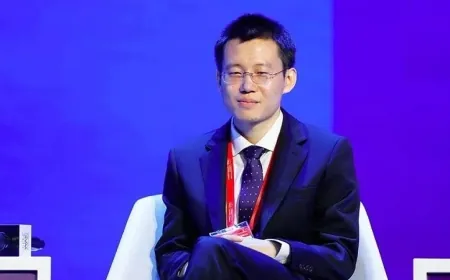India's Electric Vehicle Revolution Takes Flight: One New EV Every 90 Seconds
India's EV surge as electric scooter production soars. Explore demand, challenges, and the path toward electrification in this insightful article.

Hosur, India - In a bustling startup factory located near Bangalore in the southern city of Hosur, the scene is one of frenzied activity. On the assembly line, clad in black uniforms, workers are orchestrating a remarkable feat: crafting a fresh electric scooter every 90 seconds. As executives scrutinize the company's surging sales figures, it's clear that India's electric vehicle (EV) revolution is gaining formidable momentum.
Meet Tarun Mehta, a 33-year-old trailblazer serving as the CEO of Ather Energy, an electric scooter manufacturer that has recently witnessed an unprecedented surge in demand. Mehta proudly recounts the company's journey from selling a modest 200 units monthly three years ago to now effortlessly surpassing a staggering 15,000 units per month.
"Electric two-wheelers are experiencing an electrifying surge in popularity," Mehta asserts with a smile. His words encapsulate the spirited ethos that defines India's ambitious drive to electrify its sprawling personal vehicle market—a domain projected to burgeon into a formidable $100 billion industry by 2030. In India, a nation where two and three-wheelers dominate the thoroughfares, outnumbering cars by a factor of four, the transformation is undeniable.
A cursory stroll through the bustling streets of cities like New Delhi or Bangalore serves as a living testament to this seismic shift. Compact electric mopeds, often priced as low as $1,000, nimbly navigate the gridlocked urban landscape. These nimble vehicles have been heralded both by environmentalists and policymakers as a potent antidote to the suffocating smog that frequently envelopes Indian metropolises.
Over the past triennium, the number of EV registrations has surged tenfold across the nation. The transformation is particularly evident in the Indian capital, where the once-human-powered rickshaws have undergone a quiet metamorphosis, now zipping around the city on battery power.
Entrenched players like Hero MotoCorp, the global titan in two-wheeler manufacturing, are resolutely embracing the electrification agenda.
Much akin to their global counterparts, India is sprinting towards sustainability, with an audacious target: a third of all private car sales and a formidable 80% of two and three-wheeler sales to be electric by the close of this decade. This ambition is designed not just to serve the nation but to also illuminate the path for other emerging economies grappling with similar challenges.
Nevertheless, the path to this electrified utopia is fraught with hurdles—chief among them being the imperative to curtail costs and enhance the nascent infrastructure.
Electric Two-Wheelers Spearhead the EV Movement
Brajesh Chhibber, a partner at McKinsey who co-leads the firm's think tank on future mobility in India, underscores the monumental headway achieved in the past three years. He cites a remarkable statistic: Electric two-wheelers accounted for an impressive 7% of total two-wheeler sales last year, a meteoric ascent from virtually inconsequential figures three years prior.
This surge in demand is buttressed by substantial state backing, notably through the "FAME" initiative (Faster Adoption and Manufacturing of Electric Vehicles). Launched in 2019, this program has channeled over 100 billion rupees (about $1.2 billion) towards subsidizing EVs for consumers and constructing an expansive network of EV charging stations.
These subsidies have been pivotal in fueling the upswing. For instance, a high-speed electric two-wheeler in Delhi today costs just 15% to 20% more than its conventional diesel counterpart, once federal and state incentives are factored in. Ather Energy, an enterprise that views this paradigm shift as a "revolution," is emblematic of the numerous startups flourishing within this dynamic ecosystem. Government data indicate that over 55 EV manufacturers have risen to the occasion, catering to the burgeoning demand.
However, this is just the tip of the iceberg for India's EV odyssey. Despite the remarkable feat of selling 1 million electric two-wheelers last year, it's a mere drop in the ocean when considering India's cumulative two- and three-wheeler fleet—250 million strong. This underscores the cavernous potential for sustained growth, especially given that these vehicles constitute an astounding 80% of all vehicle sales, assuming an integral role in India's transportation tapestry.
Additionally, the shift to electric augments this trend, as electric vehicles are typically deployed for shorter daily commutes as opposed to lengthy journeys.
Challenges Beckon on the Horizon
While India's EV movement has surged forward, several formidable challenges loom large on the horizon.
Charging infrastructure, a crucial component, remains a focal point. Authorities have embarked on a quest to bolster the charging network across cities and highways, yet the sheer expanse of India remains an obstacle. Spanning thousands of cities and 28 states, along with sprawling rural areas, this nation requires substantial investment to pave the way for universal EV adoption. According to the World Economic Forum, an estimated $285 billion is imperative to electrify India's two- and three-wheeler markets.
Anmol Singh Jaggi, CEO of BluSmart, a pioneering Indian ride-sharing company boasting an all-electric fleet, accentuates the paucity of charging stations as a significant bottleneck. Jaggi underscores the importance of governmental actions extending beyond fiscal incentives to construct a robust charging ecosystem.
Despite the generous subsidies, skepticism among consumers remains. To address this, a comprehensive educational campaign is indispensable. Many consumers harbor reservations about EVs, particularly concerning safety, reliability, and cost-effectiveness. Education, alongside time, will be instrumental in illuminating the economic advantages, including fuel savings and reduced maintenance expenses.
While the challenges are undeniable, experts, officials, and entrepreneurs are united in their conviction that EVs are India's destiny. As battery prices plummet and efficiency escalates, the equilibrium will shift, propelling India's journey towards electrification.
Jaggi encapsulates this sentiment, envisioning a future laden with opportunities for enterprising young minds as India's electrification narrative unfolds—a once-in-a-century opportunity on a grand scale.
Also Read: New EV Tax Credit 2023: List of Electric Vehicle Models Eligible for Up to $7,500 in New Tax Credits































































